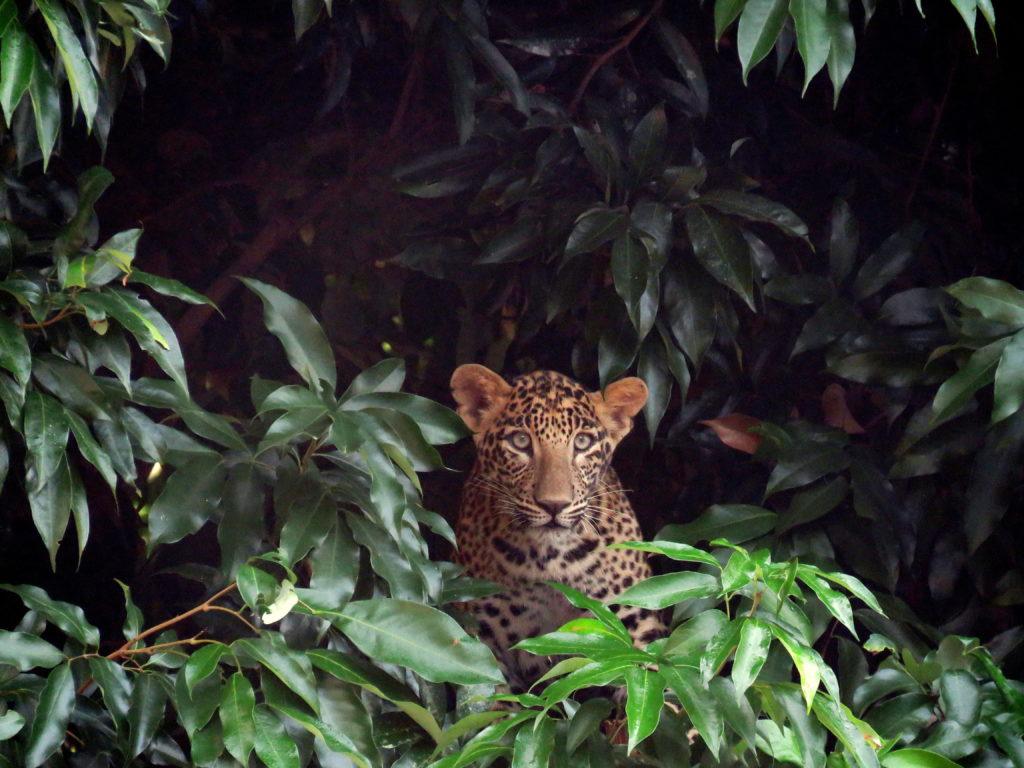A frantic call has just come in through the Human-Wildlife Conflict (HWC) communication tree: a woman living in Kathmandu, Nepal, reached up to fill the birdfeeder in her garden and found herself staring into the yellow-green eyes of an Indian leopard sprawling on a tree limb overhead. Instantly, the HWC relays this message to local rescue teams and conservation biologists, who spring into action. Within the hour, wildlife rescuers are in the garden, working to humanely trap and transport this great spotted cat back to a protected area of Chitwan National Park, Nepal. Thanks to WCN 2019 scholarship recipient and wildlife conservationist Shashank Poudel, who led the formation of HWC – a community-based network that receives alerts about incidents of human-wildlife conflict in Nepal – rescues like these are possible. By setting up this information network and recruiting key informants in strategic locations, Shashank has helped to humanely resolve many such encounters between city dwellers and wildlife that might otherwise end in tragedy.
Shashank is currently earning his PhD in wildlife sciences at Cornell University, New York, focusing on human-leopard conflict across the habitat gradient in Nepal. He finds the elusive Indian leopard particularly compelling. Also known as the common leopard (panthera pardus fusca), this sleek, nocturnal cat leads a mostly solitary life and is known for its golden fur patterned with black spots and rosettes (although some are melanistic, or all-black, like Bagheera in The Jungle Book). Indian leopards can be up to 6 feet long and weigh on average about 80 pounds (female) to 140 pounds (male). Along with Bengal tigers, snow leopards, clouded leopards, and Asiatic lions, the Indian leopard is one of the five big cats on the Indian subcontinent. Its powerful build, keen vision and hearing, agility, adaptability, and extraordinary stealth make it a superior hunter, stalking and pouncing on its prey rather than chasing it for long distances. These strong climbers typically live in forested areas, including tropical rainforests, alpine coniferous forests, and temperate deciduous forests, as well as grasslands and dry scrubs, and are known to drag their kills up trees in areas where they coexist with other large carnivores. Indian leopards are widely distributed on the Indian subcontinent, occupying an area of about 1,74,066 km2 that ranges from the Himalayas in the north to the Indus River in the west, and the Ganges Delta and lower course of the Brahmaputra in the east. An accurate count is challenging due to the leopard’s highly elusive nature, but in the last five years, scientists have estimated that 12,000-14,000 leopards live in India. They are classified as Vulnerable on the IUCN Red List.
“Human-leopard conflict has led to extensive persecution of leopards in Nepal,” Shashank said. “In addition, stringent efforts to curtail tiger poaching have made leopards more vulnerable from the perspective of illegal wildlife trade. Steadily rising tiger populations have also impacted leopard distribution by pushing them to the periphery of parks, where they predate on livestock and run into conflict with villagers.”
Born and raised in Kathmandu, Nepal, Shashank earned his BA in development studies from Kathmandu University, Nepal, and his master’s (MSc) in environmental science from Tongii University in Shanghai, China. Wildlife – big cats in particular – fascinated him during his first undergraduate field visit to Chitwan National Park. Learning about the plight of big cats and the people living with them led to his wildlife conservation career path. He has worked as a conservation officer for the National Trust for Nature Conservation, Parsa Conservation Program; a conservation officer and research associate specializing in human-wildlife conflict for the National Trust for Nature Conservation, Biodiversity Conservation Center; and a networking officer and research assistant for the BBC. He conducted two seasons of tiger and prey monitoring in Barandabhar Corridor Forest and Parsa National Park, Nepal, and says that working to mitigate human-tiger conflict particularly broadened his perspective on large carnivore conservation.
Shashank also created a “Green Radio” network by linking 20 community radio stations in buffer areas of Chitwan and Parsa National Park, co-producing and broadcasting a wildlife education program called “Bankariya,” and supervised tiger, rhino, and elephant monitoring in Chitwan and Parsa National Parks. In Parsa National Park’s southern settlements bordering India, he worked extensively to establish two rapid response teams, which engaged young people in wildlife protection and monitoring any potential illegal activities in their villages.
Shashank sees community-based conservation as a democratic practice where local communities manage natural resources with the twin purpose of protecting biodiversity and improving quality of life. He wants to help create sustainable landscapes where people and wildlife can coexist with minimum conflict.
“We face a stark question,” Shashank said. “Poisoned, snared, and poached, can leopards coexist harmoniously with people or is it simply not possible, and we should rather be looking at ways to keep people and leopards apart? I want to explore what determines conflict across the habitat gradient and will use my findings to recommend sustainable solutions that would make our landscapes safe for both people and leopards.”



